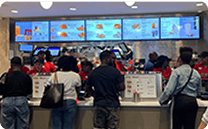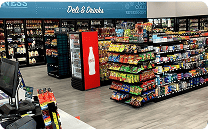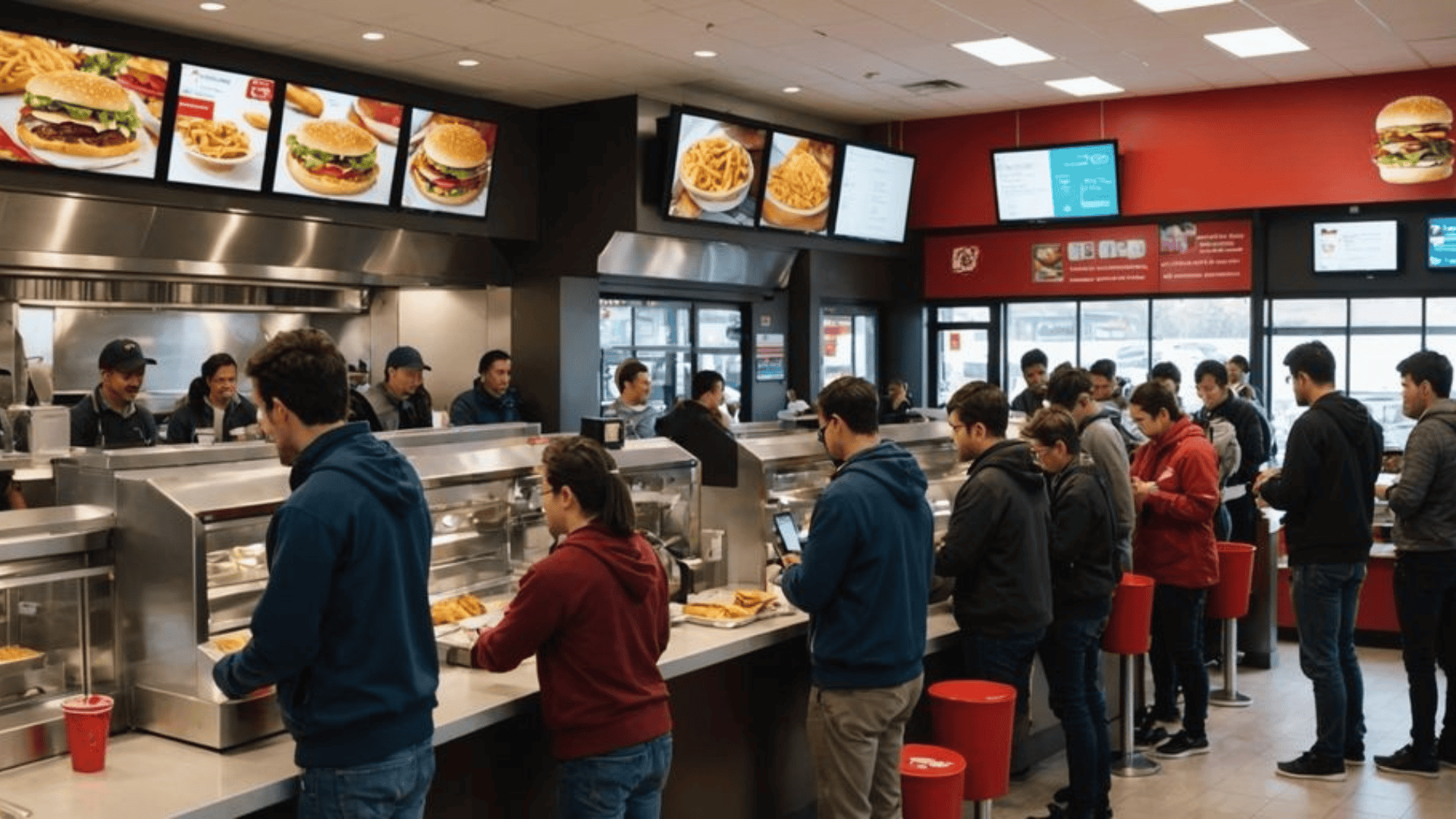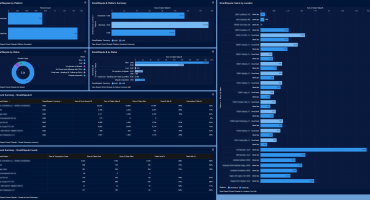In This article
You think you know your peak hours. Noon to 2 PM, right?
Maybe. But what about the quiet build-up before the storm? The after-school snack crowd? The surge of third-party delivery drivers at 7:45 PM?
Most operators rely on build-up, common rush hour times, and overworked staff to track peak performance. If you’re only reviewing sales after the fact, you’re already too late.
The Numbers Don’t Lie: Know Your Peak Hours, Win More Sales
According to data from the NPD Group, nearly 50% of all QSR traffic happens during just three hours of the day, typically lunch (11:30 AM–1:30 PM) and dinner (5:30–7:30 PM). These are make-or-break moments.
When stores are unprepared, even small inefficiencies compound:
- Guests wait longer, leave frustrated, or walk out altogether
- Online orders and in-store traffic collide, overwhelming the kitchen
- Staff feel the pressure and make more mistakes
- Throughput drops, and with it—sales
The difference between a well-managed rush and a chaotic one could mean hundreds or even thousands of dollars per day, per location.
The Problem: We Often See the Peak Too Late
Most operators plan staffing and prep based on past sales or gut feel. But customer traffic doesn’t always match the timing of POS data.
Here’s what often happens:
- You schedule your team for a noon lunch rush, but foot traffic actually starts building at 11:40 AM.
- By the time the first few orders hit, the team is still setting up—and already behind.
- That 20-minute gap leads to long lines, slow service, and unhappy guests.
Rush hours aren’t just about when it’s busy. They’re about how prepared you are when it starts.
3 Steps to Mastering Peak Times
You don’t need complex tech or data models to improve rush hour operations. Start with these fundamentals:
1. Prepare for the Build-Up, Not Just the Spike
Most teams prepare for when the line hits—but by then, it’s too late. Peak times begin with the buildup, not the transaction.
What to do:
- Pay attention to when guests arrive, not just when they order.
- Adjust staffing so stations are fully operational before the wave hits.
- Use delivery or mobile app trends as early signals.
Why it matters:
If your store is reacting to POS data alone, you’re already behind. Early prep can prevent backlogs before they start.
“We used to staff around POS spikes. Now we staff around Peak Time insights—and our efficiency has never been better.”
2. Simplify Your Menu During Peak
Complexity slows everything down—especially during peak hours. Overly customizable or labor-intensive menu items add friction to every order.
What to do:
- Highlight fast-prep items during peak windows.
- Use daypart-specific menus to streamline operations.
- Limit substitutions or offer “express” versions of popular combos.
Why it matters:
Trimming 30 seconds per ticket over 100+ transactions means additional transactions can happen. 2 additional transactions per day (at $15) is nearly $11,000 more revenue per year.
3. Train for the First 15 Minutes of Chaos
The start of a rush is the most fragile moment. When teams don’t know exactly what to do, service suffers fast.
What to do:
- Assign roles and responsibilities ahead of time.
- Rehearse the first 5–10 minutes of a rush with your team.
- Create a pre-rush checklist: stocked stations, working headsets, clean counters.
Why it matters:
Teams don’t fall apart during the rush—they fall apart before it, if they’re not ready. A strong start sets the tone for the rest.
Peak Hours Deserve More Than Guesswork
If nearly half your revenue happens during a few hours a day, those windows deserve dedicated attention. Not just more hands on deck, but more thoughtful prep, better visibility, and proactive planning.
Rush times aren’t just busy…they’re strategic. Treat them that way, and you’ll serve more guests, reduce stress, and make the most of every minute.
Learn more about DTiQ’s Peak Times Speed of Service



























![The cost of doing business: Dealing with inflation [2024] The cost of doing business: Dealing with inflation [2024]](https://www.dtiq.com/wp-content/uploads/elementor/thumbs/66631ead75f0f32462c69b9d_665780298654d3767a08c91b_inflation-article-816-x-436-px-r2f390tr342tt3ydcevdg1f0j54rryld4pgka288r4.webp)


